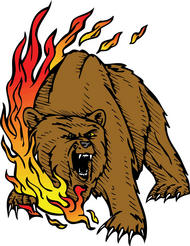|
John Salka “is
a 27-year veteran of the FDNY and currently holds the rank of Battalion Chief in the 18th Battalion in the Bronx. He has instructed
at the FDNY Fire Academy in several capacities including it's Probationary Firefighters School, Captains Development Program,
Firefighters Professional Development Program and it's Battalion Chiefs Command Course.” John
Salka is the author of First In, Last Out: Leadership Lessons from the New York Fire Department.
Publisher’s Weekly said of
First In, Last Out: Leadership Lessons from the New York Fire Department, “Salka, an FDNY battalion chief
in the Bronx, has spent 25 years with the department, rising from firefighter to his current rank. He shares his insights
on managing people, coping with crises, mentoring, decision making, adjusting to change and more. While Salka uses his experiences
fighting fires, he clearly shows how his work has applications in almost any corporation: "[O]ur mission is to protect
the people and property of New York City.... Since your customers define this value, your customers define your business.
Organizations today need to ask themselves, Who is our customer? Only by figuring out exactly who their customer is and what
they want can organizations fully grasp their mission." Salka discusses how he works with his firefighters and how managers
can use his tactics. For example, he says, "[T]he most effective way to show your people that you trust them is to delegate
to them. This is standard operating procedure in the FDNY. By letting them tackle problems on their own, you demonstrate your
belief in them." The book covers key aspects to leadership—establishing trust, connecting with employees, decision
making, engaging employees, dealing with crises and nurturing new leaders—in a logical fashion. The writing is solid
though not inspiring. Readers who expected thrilling tales of firefighting will be disappointed because Salka's real-life
anecdotes are toned down. Overall, this is a solid, but not unique, look at leadership.”
One reader of First In, Last Out: Leadership Lessons from the New
York Fire Department said, “Salka's advice is modeled on the leadership lessons of the New York City
Fire Department. He takes many of the basic principles of effective leadership that are used to define the officers of FDNY
and applies it to real life situations that can be used at any level of leadership by comparing these situations to those
faced by the firefighters and their daily battles.
This book's real strength comes
from Salka's approach: he writes to the front line supervisor/manager, the folks who are often on the first tier of management.
While many books, as good as they are, assume that the reader is in a position to affect policy and choose their entire team,
"First In" speaks to managers whose responsibility is the daily performance of the staff. In addition to great advice
that can be put to practical use by leaders at any level, Salka regales the reader with.”
One reader of First In,
Last Out: Leadership Lessons from the New York Fire Department said, “As a member of corporate America,
I know first hand how many bad managers there are out there, and how easy it is to make poor decisions when managing people.
This book is straightforward and easy to read, but more importantly, it outlines what I think, are some of the most fundamental
ideas behind strong leadership. Some are common sense ideas that are easy to forget (and are helpful to read again from this
angle) others are more surprising. But you will see most if not all of them in every good boss/leader you've ever worked
for or observed. (and respected, for that matter.) Highly recommended to anyone who is looking for a truly useful book on
managing and leading - the right way.”
|
